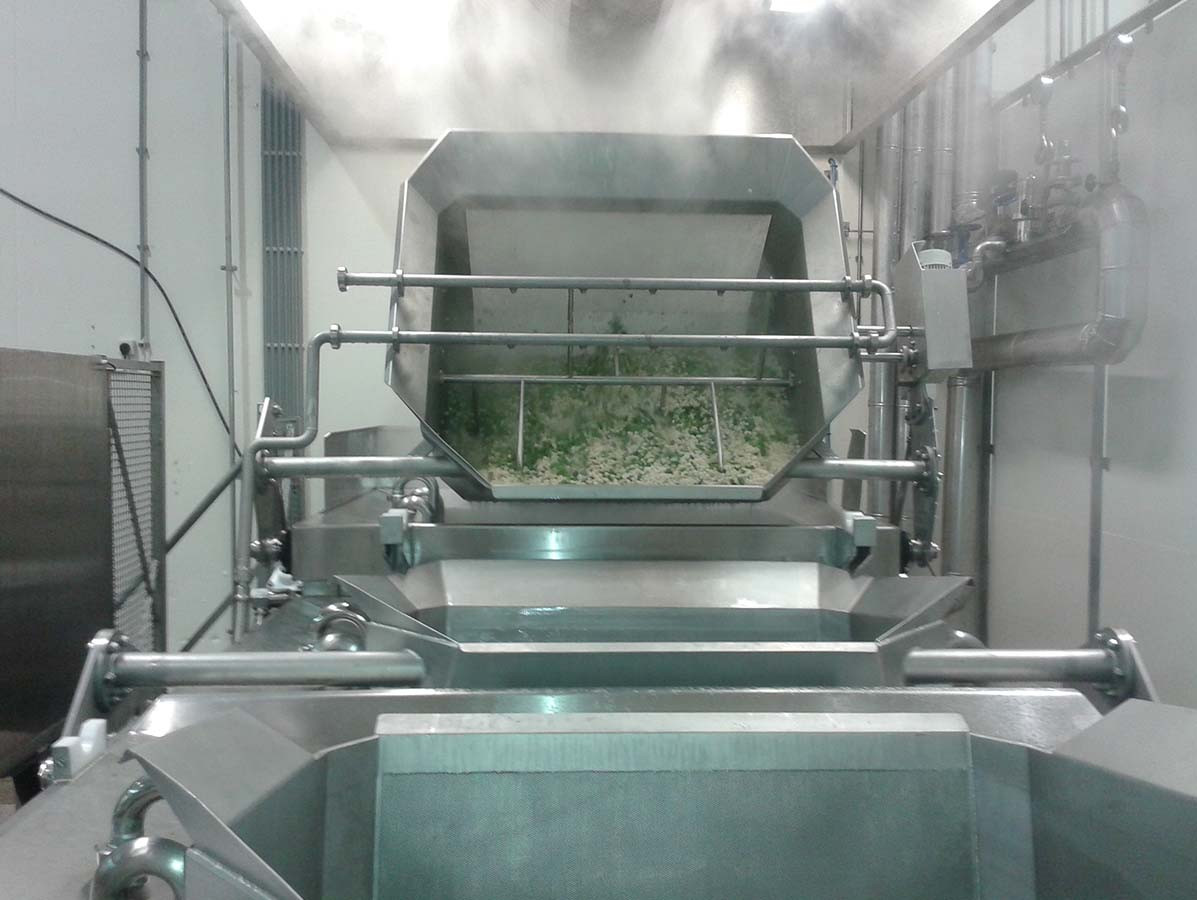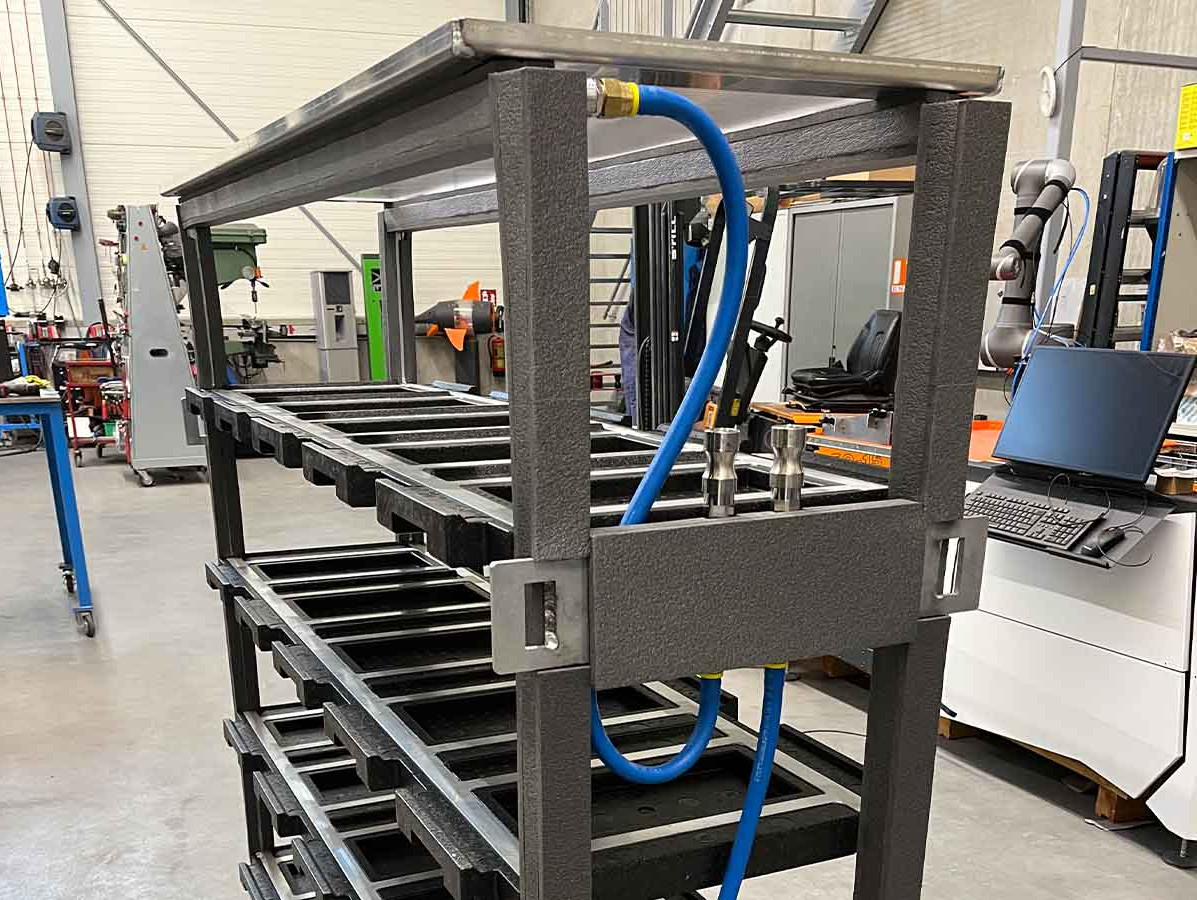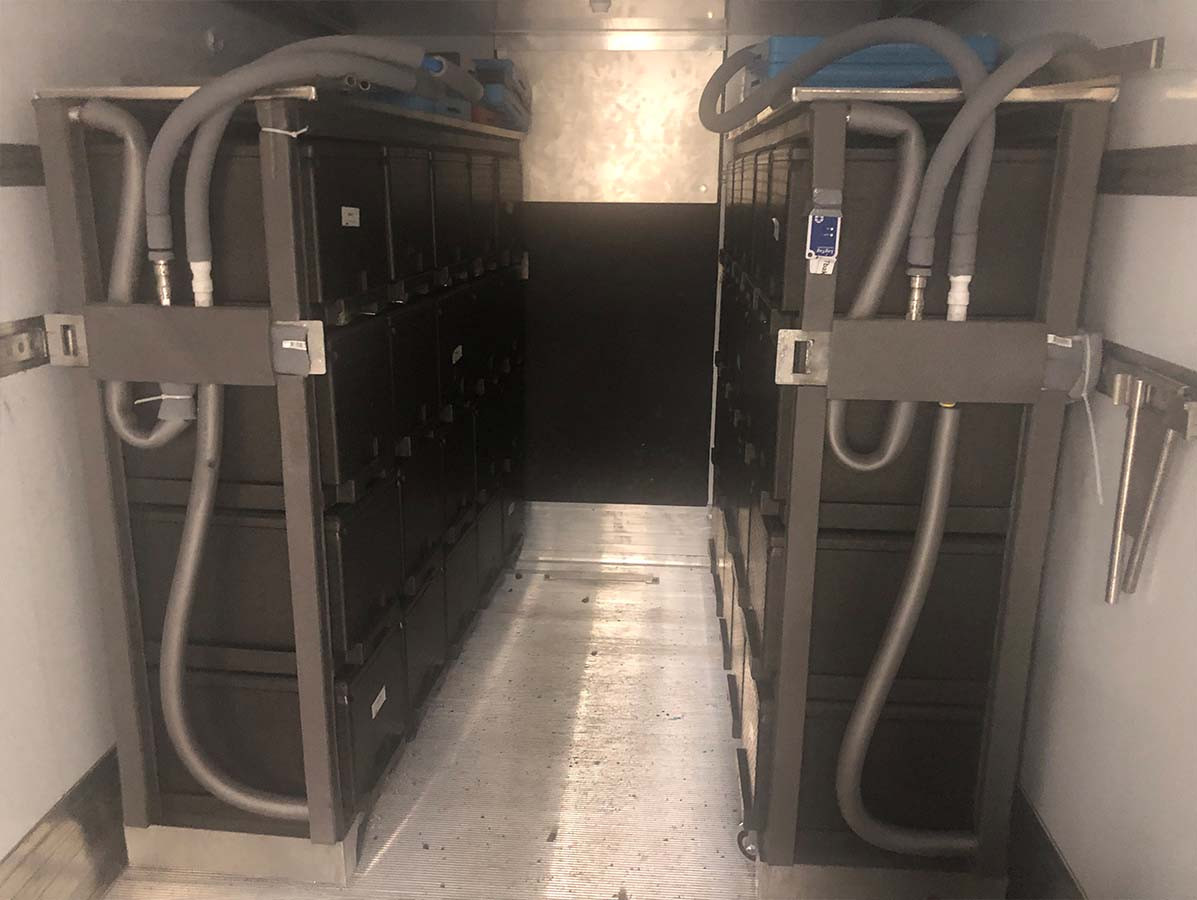
Production processes need to become more sustainable and should no longer depend on gas only. Both European and national regulations are increasingly pushing for emission-free operations. What are the biggest challenges in the transition to all-electric in an industry where heating and cooling are essential to the process?
Cooling, freezing and heating are inextricably linked to the food industry. These processes are energy-intensive. Innovations leading to savings can therefore yield significant benefits. The focus of these innovations is on electrification. Unfortunately, this does not always provide the desired solution; due to limited available electrical capacity on the grid and volatile energy prices, they do not always deliver the intended results. Wageningen Food & Biobased Research investigates practical solutions and quite often it starts with energy-saving developments. Effectiveness and efficiency are key terms in this context.
Effective cooling or heating means applying cold and heat as dedicated as possible and ensuring the required temperature differs as little as possible from its ambient temperature. A good example is block freezing fish in a plate freezer. In this case, not the entire space needs to reach the low freezing temperature. Moreover, thanks to the absence of fans, little auxiliary power is needed. Less power input that is transformed to heat, also means less cooling energy required. Double benefit.
Efficient cooling or heating means generating the required cold/heat with the highest possible efficiency. Under the most common conditions and loads, the system must achieve the highest possible efficiency. Efficiency improves by increasing the share of (self-generated) renewable energy. However, renewable energy like solar and wind energy is not always available at the right time and with the right capacity. To regulate this, energy buffering combined with smart control is essential.
Large amounts of heat are needed in industrial kitchens. Once a batch is ready, the hot content is generally discharged, subsequently the kettle is refilled and reheated. This requires a lot of energy in a short time. Traditionally, this is provided by a gas-fired low-pressure steam system. Nowadays, with a buffer volume equal to one kettle volume, the heat from the discharged contents can be used to preheat the new water. This saves energy and speeds up the cooking cycle. This direct or short-cycle heat/cold recovery is relatively simple and therefore economically very interesting.

Implementation of an actively refrigerated stretch cart.
Active cooling systems during refrigerated transport are significantly less efficient than stationary cooling systems. This is because mobile cooling units must be compact and light weight, and also be multi-purpose for cooling and freezing applications. No or less cooling during regional transport yields significant energy savings, and large battery packs are not needed to electrify the cooling system. Two principles are suitable to reduce or even eliminate the need for cooling during transport. An important aspect: product quality must not suffer!
First principle: Superchilling. By cooling the food product before transport to a slightly lower temperature, it can be transported with less cooling needed. Best results are expected when not only reducing the temperature slightly, but also by using latent cold buffering. To enable this without quality loss due to freezing, this requires a small percentage of homogeneously distributed little ice crystals in the product and/or a layer of ice on the surface of the product. This technique is successfully used in transporting fresh salmon, for example. The fish stays fresh longer and is less sensitive to fluctuations in ambient conditions.
Second principle: Using insulated boxes or covers. These devices better protect products from ambient heat intrusion, especially when regular door openings of the cargo space are needed. Wageningen Food & Biobased Research developed a cool box system where products are actively cooled from the bottom of insulated boxes. The big advantage is that cooling elements are no longer needed. Also, no cold is lost due to frequent door openings. Very suitable for fine-meshed refrigerated distribution of fresh food or medicine.
In the near future, many processes will be equipped with a 24-hour buffer for sustainably generated energy. Such a buffer ensures that the supply of renewable energy can be used optimally. The most high-quality energy storage is that of electrical energy. However, storing large amounts of energy in batteries is often economically unfeasible, and the lifespan of batteries is limited. Therefore, in cooling and/or heat pump installations, it makes more sense to store the energy in the cooled space itself, or in a short-cycle cold and/or heat buffer. A smart control system is essential to match supply and demand effectively.
Storage always involves losses. In heat and cold storage, this mainly concerns temperature and energy losses. Fortunately, there are solutions to limit these losses.
The temperature of cold in an external ice buffer is not low enough to cool a cold store to 4 °C. However, by integrating cold storage in the cold store itself and looking closely at the heat storage capacity in terms of amount (kJ) and power (kW), this is achievable. A promising development in this regard is the application of cold carrier-activated PCM materials on the inside of cold/freezer cell panels. By buffering cold in the cell and thanks to the absence of fans, this principle is very suitable for sustainable standalone cooling systems. This is being further developed in Wageningen.

Inside of a transporter van with actively cooled insulated coolers - designed by Wageningen Food & Biobased Research.
The food industry uses many processes requiring high temperatures, such as blanching, cooking, and baking. The necessary energy is often still provided by using natural gas. A heat pump moves low-grade heat to a higher temperature level using auxiliary energy. However, an High Temperature heat pump is not the ultimate solution. Producing a high final temperature often negatively affects the heat pump's efficiency, especially if the required temperature is large. A sufficient high and stable temperature of the heat source is therefore very important. Achieving a heat pump with good efficiency requires a suitable design and control of the achievable efficiency under practical conditions.
Water vapor recompression is a simple and proven technique for recovering and upgrading heat to a high-temperature level. This works even for ovens that need to reach 170 °C. For good efficiency, it is important that pure water vapor is compressed, without mixing with air.
EU regulations require cooling systems to use natural refrigerants with no (or very low) Global Warming Potential (GWP). Unfortunately, natural refrigerants are flammable and/or toxic. In a poorly ventilated space, a leak could create an explosive mixture.
Nevertheless, natural refrigerants can be used safely relatively easily. Choose a chiller (a chilled water machine, hence an indirect cooling system) in a well-ventilated machine room for new construction, or opt for a chiller with an outdoor installation. In the event of an emergency, an emergency cooling system can also be connected relatively easily. The efficiency loss due to the presence of an extra heat exchanger and pump is limited for cooling applications. For freezing applications, an indirect system is less suitable due to greater pump losses. This loss can be partially avoided by choosing CO2 as an evaporating refrigerant, for example.
Research and development into new energy-saving options to further sustainable cooling and heating generation and use a larger share of self-generated energy are ongoing. Knowledge is deepening and expanding. Weigh the pros and cons of investing in more sustainable options: Yes, it costs money. But you save on operational costs, reduce CO2 emissions, and limit the use of the capacity of the electrical connection capacity.
Bijschrift main photo: Boiler from Marfo.
Source: Vakblad Voedingsindustrie 2024